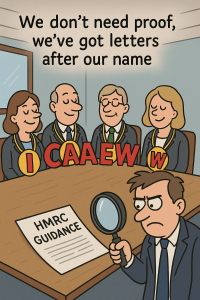1 Climate warming is an existential threat needing urgent action for sustainable air
transport helping to mitigate it without serious upset of world trade. This should involve
airships, which haven’t featured very much in later 20 th and 21 st Century life so far.
2 Airships are efficient transport aircraft, improving with bigger size, that naturally were
sustainable types before the technology was abandoned in the mid-20 th Century
without contributing to the climate crisis. They haven’t been considered much since
then by the government or main aerospace industry, where there’s little evidence of
this today.
3 Airships proved ability long ago to operate in/out of unprepared sites, including water
and to/from ships. They have exceptional endurance and internal space for outsized
cargo and systems that aeroplanes can’t manage, including ability as aircraft carriers.
4 Small airships were the main guardians for coastal defences and ship convoys in both
world wars against submarines and tethered aerostats (the basic buoyant body
airships need) are still used in most wars for surveillance, which patrol airships could
serve.
5 OTOH, aeroplanes for cargo, mass transport and high airspeed duties are extreme
gas-guzzlers worsening climate change, very difficult to re-engineer affordably for net
zero (if possible) due to physics involved. They also need runways and massive
infrastructure adding to the climate issue. Their upgrade is a huge risk issue that could
bankrupt the nation if not controlled, unlikely to meet 2050 deadlines – if ever this
century.
6 It’s a similar issue for helicopters and other rotorcraft, where the physics don’t enable
them to be scaled up further – already maxed out with relatively poor range,
endurance and payload weight/size ability.
7 New fangled ways using a combination of wings and rotors are just fighting a losing
battle against the physics of flight without natural buoyancy ability. The effort in these
directions, whilst it may be useful for a number of purposes, erode resources needed
for large sustainable transport airships – hardly given serious UK consideration.
8 Buoyancy in the atmosphere is a key game changer that should be part of the solution.
Semi-buoyant types with an aerostat for the purpose (also functioning as an aerodyne
or lifting body) introduce ways to solve the conundrum. However, it also needs
recognition that traditional airships didn’t succeed for a number of reasons, also
needing redress.
9 The main problem for airships with a unidirectional (UD) form is behaviour at ground
level, as broadside winds are near impossible to resist. The solution to moor them at
their nose from a mast (permitting weathervane motion) wasn’t ideal, allowing many
incidents, also needing large flat ground areas to swing around. Hangars for storm
protection and MRO purposes also are not easy to get in and out of, being causal for
many further incidents.
10 People involved in new airship developments without previous experience often fail to
understand the issues of large types for heavy-lift and patrol purposes. This in many
cases needs airships that instead have omni-directional (OD) characteristics and
function like helicopters. The solution thus needs fundamental change for new types.
11 Luffships Buoyant Aircraft (LBA) advocates the need for development of them in a way
that grows instead of arrives. This is because they also need development of the
infrastructure, trained operating people, supplier arrangements, international cross-
border arrangements, certification standards and many other business support needs
to build the industry for such capability instead of just the aircraft. After all, the industry for serious heavy-lift types hardly exists but can be established in sustainable ways
that are transformational, able to introduce a paradigm shift for the aviation industry as
a whole.
Buoyant Aircraft (airships and aerostats, tethered or free flying) are the right way to serve:
• Northern and southern artic regions of the world with little ground infrastructure,
particularly now that climate warming has destabilized the permafrost, making it
unsafe for ice-roads, railways, aircraft runways and other installations used before. It
needs them to serve long-range patrol and point-to-point duties that nonbuoyant
aircraft (aeroplanes and rotorcraft) struggle to serve. Professor Prentice in Canada has
held regular “Airships to the Arctic” international conferences advocating their use
since the turn of the century.
• Archipeligo and isolated islands such as the Hebrides, English Channel, Falklands,
Indonesia, Polynesia, Iceland, Greenland, the Caribbean, Mediterranean, Seychelles,
New Zealand, etc, for general services as sea levels rise.
• Australia’s vast midlands with poor infrastructure.
• African game-lands, desserts, flooded regions, isolated people anywhere, forests and
jungles, widespread regions without easy access or infrastructure anywhere.
• Ad hoc human and disaster zone needs, where the infrastructure normally used has
been destroyed or temporarily devastated from earthquakes, fire, floods, storms, wars,
etc, preventing other transport methods from operating and needing ways able to
access and provide essential support needing aerial-cranes for serious heavy-lift pick
& put ops.
• Agricultural and forestry needs, infrastructure duties (roads, rails, rivers, canals, pylon
& pipe lines, fences, etc) monitoring, boarders and coastlines surveillance, fisheries
protection, customs control, policing services, air-ambulance and fire-watch needs,
etc.
• Worldwide commercial and military air services that other aircraft don’t suit.
• International trade worldwide!
Indeed, airships are a game-changing way that can over a reasonable development period
cost effectively replace obsolete transport and other aircraft with high greenhouse gas
emissions and fill the gaps that current aircraft hardly serve but in sustainable ways
anywhere, widening the door for international air services and trade.
This is not something government should ignore as its already underway in other countries
such as China, Finland, France, the USA and so on. However, the UK instead could take
the lead for new ways. This is possible as it still has the expertise of aircraft people from
the early 1980s who worked for Airship Industries and later went on with bigger and then
new proposals that overcome the issues of traditional airships. If they are not supported
then the cycle of failure since airships first flew (1862) may turn again.
They are working in alternative ways to provide easier OD types that overcome the issues
of traditional airships, which were developed as UD types too soon. These airships needed
numerous complexities to be solved simultaneously at a time when the issues were not
well understood and without sophisticated computer methods to investigate behaviour –
learning from doing and many failures. We now have the knowhow and the simulation
tools as well as understanding of the issues to solve and reasons for adopting OD types
instead, which most other developers are not pursuing. This is why the UK needs to lead
and enable work.
To close, UD aeroplanes had an easier route from copying birds and flying gliders before,
needing only to add propulsion. They also had the advantage of small size, easing
development. Helicopters with VTOL ability and OD characteristics followed later, able from the industry being established and the need for aircraft with point-to-point ability.
However, early airship developers didn’t just add propulsion to a simple balloon from
correctly seeing the need for balloon aerodynamic shaping to make headway against
winds also from seeing how tethered balloons behaved. It was logical to adopt a fish form
but something that introduced problems. LBA went back to basics for an easier way, where
jellyfish reign!
Author:
Charles Luffman



